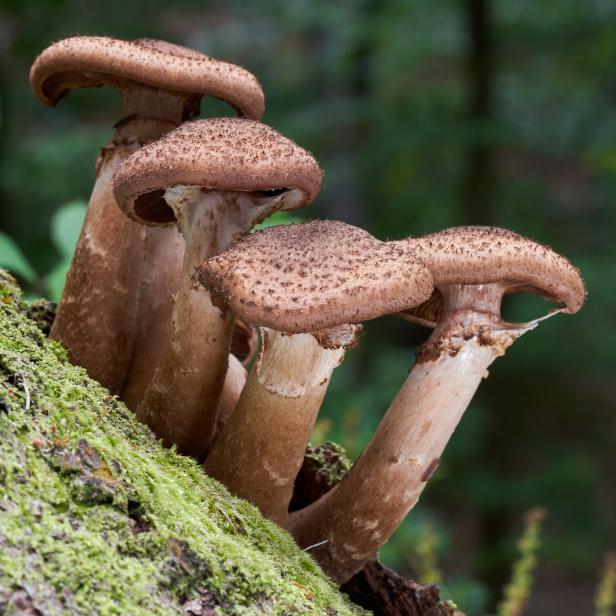
Igor Kramar
The Largest Living Thing on Earth Is a 3.5-Square-Mile Fungus
The blue whale is the biggest animal on Earth, but it’s not Earth’s biggest life form. No, the blue whale pales in comparison to the actual largest living thing on the planet: the humongous fungus.
The humongous fungus is a single fungal organism found in Malheur National Forest in Oregon, and it belongs to a species called Armillaria ostoyae. These fungi can get pretty big, but the humongous fungus in Oregon is an individual that covers an area of three and a half square miles or 9 square kilometers.
At that kind of size, you’d imagine that the humongous fungus would be easy to spot. You’d be wrong. That’s because it’s almost completely underground for most of the year. It only pops up when it comes time to reproduce.
See, the part of a fungus you’re probably most familiar with is the mushroom cap. But that’s only one specific part of the fungus, and in most species, it’s the only part that appears above ground. It’s called a fruiting body, and it’s a reproductive organ. I’ll let you take a minute to absorb the fact that pretty much every mushroom you’ve ever eaten has been fungus genitalia.
Anyway, this goes for the humongous fungus too. Its mushrooms only peek above ground when it’s time to make more humongous funguses.
If you really want to get to know the fungus, you have to look underground. There, you’ll find a thriving network of interconnected fibers called mycelium. This mycelium is the main body of the fungus, and it spends its days chowing down on soil nutrients and decomposing dead material.

Machacekcz
Armillaria ostoyae mushroom, commonly known as honey mushroom.
Or, in the case of the humongous fungus, it can eat the forest itself. Scientists believe the humongous fungus got to be so big because it can survive by digesting living tree roots. Given that it lies beneath a forest floor, that’s good news for the fungus, but bad news for the trees. The humongous fungus has wiped out many of the trees in its path, but luckily, the Pacific Northwest has lots more where that came from.
That’s probably why this humongous fungus has an equally humongous lifespan. It’s survived in about the same spot for nearly 10,000 years, just chowing down on trees, making more of itself, and living its best fungus life.
For more on this topic, listen to the Curiosity Daily Podcast
Discovery's award-winning Curiosity Daily podcast will help you get smarter about the world around you — every day. In less than 10 minutes, you’ll get a unique mix of research-based life hacks, the latest science and technology news, and more.
















.jpg.rend.hgtvcom.476.476.suffix/1633031314945.jpeg)

